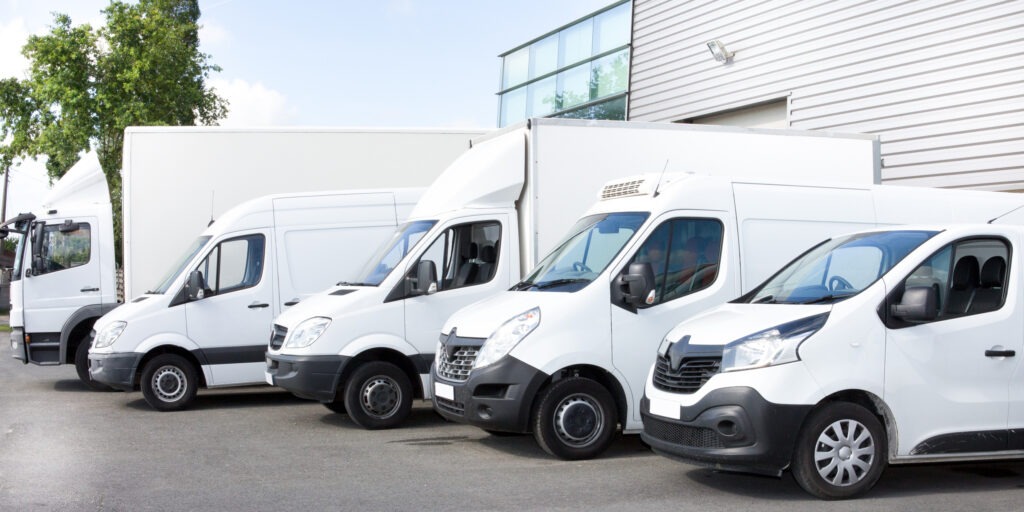Europe’s LCV market returns to downward trend in October
25 November 2022

With 102,766 registrations in October, the EU’s new light-commercial vehicle (LCV) market fell by 13.9% year on year. Germany, Italy, France, and Spain all saw declines, and unlike September, the wider European region could not depend on the UK to boost numbers.
The latest data published by the European Automobile Manufacturers’ Association (ACEA), halts any hope of a stable recovery happening soon. The EU saw registrations decline by 11.3% in September, marking an incline on the 12.1% fall in August, and the 20.6% drop in July. Year to date, the EU’s new-LCV market recorded a decline of 20.6%, with 1,046,778 registrations between January and October.
Those looking to the wider European region for a more positive performance will be disappointed. October did not see a repeat of September’s more positive pan-European performance.
The EFTA markets of Iceland, Norway, and Switzerland felt a 4.5% fall in new LCV registrations, to only 4,238 units. Meanwhile, the UK’s new-LCV market declined by 18.4% year on year in October, with registrations for the month at their lowest since 2012.
Double-digit declines
Considering the four major EU markets, Germany saw the biggest decrease in new-LCV registrations with a double-digit drop of 16.6% year on year at 17,625 units. Next came Italy with 13,717 registrations, down 7.3% against October 2021. France followed closely with a 6.7% drop, then Spain with the shortest fall of 0.5%.
Austria’s new-LCV market continued its downward spiral, only registering 1,722 units in October. This is down 78.9% on the same month last year, the biggest decline in the EU, and wider European region. This follows an unfortunate trend for Austria, which also contends with the greatest year-to-date decline of 65.6%.
However, the EU did see some positive performances last month. Luxembourg, Ireland, and Lithuania all recorded double-digit growth, up 24.3%, 13.9%, and 11.8% respectively. Elsewhere, Bulgaria (9%), Sweden (7.1%), and Estonia (1.2%) also saw year-on-year improvements in LCV registrations.
Supply-chain challenges
October’s negative LCV figures confirm the continuation of a contrasting trend with the bloc’s more buoyant new-car market. The sector recorded its third consecutive month of growth, with a 12.2% increase in new-car registrations, although the recent positive performance is set against a lower base of comparison than earlier in the year.
This contrast confirms the sharper impact of supply-chain challenges on the LCV market. This includes long-standing semiconductor shortages and disrupted manufacturing lines owing to COVID-19 lockdowns in China and the ongoing war in Ukraine.
While these bottlenecks are expected to ease towards the end of 2022, the new-car market is likely to benefit more than the new-LCV market. But as interest rates rise alongside inflation and energy costs, demand will take a knock as businesses and consumers pull back on spending.
LCVs weigh down sector
Declining LCV registrations have taken a heavy toll on Europe’s wider commercial-vehicle sector. This includes different weight categories of heavy-commercial vehicles (HCVs), as well as buses and coaches. October marks the 16th month of decline for the total market, although the 9.4% contraction betters the steep fall of 16.8% year to date, with only 1,646,816 units registered.
More specifically, Germany’s commercial-vehicle sector fell 12.4%, followed by France and Italy with losses of 5.3% and 3.9% respectively. The outlier was Spain, which managed to record an increase of 1.2%. The EFTA dropped 4.6% in October and 16.8% year to date. Meanwhile, the UK’s commercial-vehicle market shrunk by 14.1% last month and 16.9% between January and October.
HCVs weighing 16 tonnes and over recorded gains of 19.1% last month, and 6.4% in the year to date. Medium and heavy-commercial vehicles, weighing over 3.5 tonnes, saw an increase in registrations of 16% in October and 2.6% year to date.



